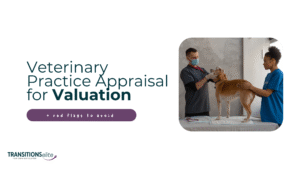Veterinary Practice Market Trends and Key Industry Growth Insights
The veterinary industry is experiencing what can only be called a boom, a period of growth, and this trajectory is continuing upward. More people are getting pets, and naturally, there is a rise in demand for pet care. However, there is a workforce shortage, and client expectations are shifting. Both serious opportunities and challenges are currently hovering over the industry like a cloud.
In this post, we’ll explore Veterinary practice market trends to identify where the biggest growth opportunities lie, what challenges could slow momentum, and what you should know if you’re considering selling your practice.
Why the Vet Industry is Booming
The past two decades have seen the veterinary industry grow into a multi-billion-dollar sector, and all signs suggest momentum is here to stay. Several factors have led to this surge, such as:
- Pet humanization: This was bound to happen, and it has become the trend worldwide now: pets are family members. They always were, but now it is more obvious than ever before that people genuinely treat pets like their own. In fact, an objective way to confirm this is by seeing the rise in millennials’ and Gen Z’s willingness to invest in the wellness of their pets. Think wellness plans, specialist care, advanced diagnostics, and the lot. All of these would have been a rarity only about a generation ago.
- Higher spend per visit: Even as the number of visits per household levels off, spending per visit is climbing thanks to expanded services and advanced treatment options.
- Rising pet ownership rates: Across the United States as well as globally, households are adopting pets at a historically high rate. According to the AVMA, 94 million US households own at least one pet, which is great news for any pet-related business, including the veterinary industry.
- Insurance growth: Pet insurance adoption is still relatively low in the US, but growing steadily. This has reduced the barrier for owners to approve higher-cost treatments.
- COVID-19 acceleration: The COVID-19 pandemic affected most industries negatively, but not this one. In fact, during the pandemic, a sudden spike in pet adoptions was triggered, likely due to the isolation and loneliness individuals felt during that period. While that trend has cooled, it has left behind a lasting increase in service demand.
- Financial interest: While the pandemic had an overall negative impact on the market, it showcased just how recession-resistant veterinary medicine really is, similar to general medicine. Pets need care even when the economy slows down, and pet parents will do everything in their power to provide that care. This has caught the attention of investors and resulted in a massive capital flow into the space.
All these combined have created the perfect storm of growth and set the stage for major shifts in how practices are owned, operated, and valued.
Corporate Consolidation Is Reshaping the Landscape
Back in the days, selling a practice meant finding a younger veterinarian ready to take a leap forward and step into the ownership role, or perhaps finding a local associate who wished for the same.
Today, most deals are well-funded by buyers who are less interested in the medicine side of things. They leave that unchanged and focus more on the consistent and long-term cash flow that veterinary practices bring in. Large corporate groups, many backed by private equity, are acquiring practices at a rapid pace.
For practice owners, consolidation has two big implications:
- Higher Valuations: Due to rising demand, competition among buyers is stiff, which has driven up practice multiples significantly. Well-run clinics can sell for millions, even if they’re not in a major metropolitan area.
- New Sale Dynamics: Selling to a corporate or private equity entity often means, for the owner, staying on in one form or another. Usually, this involves taking on the role of medical director while freeing themselves of ownership responsibilities such as handling HR, payroll, recruiting, and finance. Many doctors find this shift liberating, as they can continue practicing medicine without the weight of ownership stress.
But consolidation also raises questions about long-term culture and independence. Will medicine stay local and personalized? So far, many groups have taken a hands-off approach to clinical decisions, but the future balance between corporate efficiency and personalized care remains a hot topic.
Who the Major Players Are
- Mars Veterinary Health: The largest player globally, owning brands like VCA, Banfield, BluePearl, and Linnaeus.
- National Veterinary Associates (NVA): Operates more than 1,500 locations worldwide.
- MedVet, Thrive, Pathway, and others: Mid-sized consolidators that focus specifically on specialty and general practices.
What This Means for Practice Owners
Practice valuations have skyrocketed, but independent owners now compete with deep-pocketed corporations for talent and clients. Consolidation is expanding into secondary and tertiary markets, creating an ideal window to sell. However, there are pros and cons to working with independent buyers versus private equity and corporate consolidators, so that is something practice owners should consider before picking either side.
Veterinarian Shortages and Workforce Challenges
If there’s one issue that practice owners complain about over and over again, it is that it’s getting harder every day to find and keep quality veterinarians. The American veterinary workforce is under significant strain due to this shortage. Here are some things to know:
- The AVMA estimates that by 2030, the U.S. could face a shortfall of 15,000 veterinarians.
- Veterinary technicians and front-desk staff experience some of the highest turnover rates in healthcare due to burnout and low pay.
- Recruiting can take five to six months on average, even for proactive owners.
- High caseloads, emotional demands, and financial pressures have created alarming rates of burnout in the profession.
- The shortage isn’t limited to doctors, as technicians and support staff are also hard to come by.
- Buyers looking at acquisitions often view overworked single-doctor practices as risky. If one veterinarian produces over $1.3 million alone, that is seen as unsustainable.
Attracting and sustaining new clients becomes difficult due to these issues, and indirectly, attracting buyers becomes difficult too. Owners must build a sustainable, attractive workplace for veterinary professionals to help solve this issue. Practices that manage to do this not only perform better financially but also earn higher valuations when it’s time to sell.
Technology Adoption is Still Lagging Behind
Despite the massive boom in demand, many practices are still operating on outdated systems and technology. Other industries have adopted the latest tools, but veterinary medicine seems to be falling behind. Compared to human healthcare, veterinary medicine is far behind.
Areas where practices particularly lag include telemedicine, management software, workflow automation, and data analytics.
All owners want to increase their veterinary practice valuation, but ironically, many do not consider upgrading their operations with the latest technology a major priority. Investors notice this gap and consider it a missed opportunity. Practices that embrace tools for marketing, operations, automation, and more tend to stand out in the market and command stronger multiples compared to their counterparts that do not progress with the times.
Client Behavior is Shifting Fast
The relationships clients have with veterinarians have changed drastically because things are no longer the way they were 20 years ago. Now, thanks to the internet and increased options, clients are more informed, more demanding and more willing to switch practices if their said demands aren’t met.
Let’s take a look at some major changes that can be seen today:
- Convenience matters: Clients expect things to be easy. They want online scheduling, reminders, and clear communication, much like in human healthcare. If your practice doesn’t offer these, another will, and you risk losing patients to the competition.
- Price sensitivity is rising: While owners are willing to spend more, they also expect clear, upfront pricing and transparency. Inflation has forced many households to scrutinize pet care spending, so they increasingly ask for payment plans and wellness packages.
- Emphasis on experience: Pet owners want not just great care for their pets, but also a positive experience for themselves. This translates to friendly staff, convenient hours, and minimal wait times.
- Generational differences: Millennials and Gen Z pet owners are now the largest client groups, and they engage heavily with practices through social media and online reviews. A practice with no online presence is missing out on essentially free marketing and is failing to reach new customers.
Practices that are able to adapt to these changes thrive, while those that do not lose clients to competitors that meet the new expectations.
Profitability Trends: Revenue Up, Margins Under Pressure
It is quite a paradox that many practice owners face. On one hand, they are seeing record revenue, but the profit margins tell a different story. Why is that?
First of all, labor costs. Staff wages have been rising, amplified further by the fact that talent in the veterinary industry is scarce. Secondly, the cost of supplies and medications needed for everyday operations is higher than ever before. The final blow is dealt by clients’ resistance to price increases. Many practices have tried raising prices, but pushing them even slightly too far results in losing clients.
When buyers invest in a practice, they are not just focused on the big revenue number. What they look for is consistent profitability. That is why practices with strong margins, happy and loyal staff, and clear financial records tend to get the bigger payouts when selling.
Top Veterinary Industry Growth Areas to Watch
Despite the challenges, the industry is ripe for the taking. Opportunities are boundless, and the market is red hot right now. Addressing those issues and expanding certain aspects will lead to the biggest payouts. Areas that are poised for strong growth include:
1. Specialty, Niche, and Referral Care
Practices that offer services that no one else does, niche areas, or have expertise in a certain field, be it dentistry, dermatology, cardiology, neurology, oncology, feline-only care, and surgery services, can essentially corner a chunk of the market for themselves. Customers who need these niche services will come to them, stay loyal, and the clinic can justifiably charge them higher for specialized services.
2. Urgent Care Models
Most individuals work a 9-5, and it can be difficult to take their pets to the clinic during those hours. Since clinics also typically operate during that time, this creates obvious problems. Pet owners often ask for after-hours and same-day access. A practice that provides this will inevitably see a rise in clients.
3. Preventive Wellness Plans
Think of these like a “health membership” for pets. Instead of paying a big bill every time they visit the vet, owners pay a monthly fee that covers regular checkups, vaccines, and routine care. This makes costs more predictable for pet owners and helps clinics generate steady, reliable income each month.
4. Multi-Doctor Expansion
As stated before, a clinic dependent on a single doctor (especially if that doctor is the owner) has limited potential. After all, one person only has so much time. Hiring more doctors allows the practice to serve more patients and bring in more revenue. Additionally, if the owner wants to sell the practice, buyers will pay more for a business that isn’t dependent on just one doctor.
5. Technology Adoption
Falling behind in technology is a mistake. Modern clients expect quick treatment, instant results, and convenience. Tools like online appointment scheduling, pet-owner portals, and digital marketing help clinics run smoothly while reducing staff workload, errors, and keeping clients happier. It is a win-win.
6. Recruitment and Retention Excellence
Hiring and keeping good veterinarians and staff is one of the hardest parts of running a clinic. Practices that treat employees well, offer good pay and benefits, and create a positive workplace become known as great places to work. The natural result is a loyal and stable team.
Challenges That Could Slow Growth
On the path to success, there are bound to be hurdles. Despite the momentum pushing the veterinary industry forward, there are headwinds slowing things down.
A major concern is the rising costs of essentially everything. Medications, supplies, and staff wages all contribute towards business expenses, which eat into profits. Speaking of staff, there is also a severe shortage. Without enough trained veterinarians and support staff, many practices simply cannot expand as planned.
To make a complicated situation even more complex, changing regulations around telemedicine or restrictions on corporate ownership could alter the way practices grow in the future.
Finally, client affordability is always a factor. As the cost of care rises, some pet owners may postpone or skip services, even while others are willing to spend more. These hurdles aren’t likely to stop the industry’s growth altogether, but they will influence how practices adapt, compete, and deliver care moving forward.
How Partnering with Transitions Elite Can Make All the Difference

Selling a veterinary practice is not just about the numbers, but also about your team, your clients, and the legacy you’ve built. That’s why relying on a traditional broker often falls short. You need the right guidance.
Transitions Elite specializes exclusively in practice sales, helping owners achieve the best possible value while protecting what matters most. Unlike other veterinary practice brokers, we act as strategic partners and guide you through every step of the process.
Founded by Dr. Michael Warren, Transitions Elite was created to fill a critical gap. Too often, practice owners step into negotiations inexperienced, while teams of financial experts support buyers such as private equity firms and corporate groups. Transitions Elite levels the playing field by providing:
- Accurate, realistic valuations that capture your practice’s full market potential
- Access to a wide network of qualified buyers, from corporate consolidators to private equity groups
- Sophisticated negotiation strategies that protect both your financial outcome and your practice’s culture
- Post-sale transition planning that ensures stability for your team and continuity for your clients
The result is a process that not only secures your financial future but also preserves the legacy you’ve worked so hard to build. If you’re considering selling your practice, the sooner you start planning, the stronger your outcome will be. Contact Transitions Elite today to maximize both peace of mind and profitability.
Get a free evaluation of your practice today.
Closing Thoughts
The veterinary industry is being shaped by consolidation, client expectations, workforce shortages, and new growth opportunities at a rapid pace. For practices, this is the time to adapt to these changes, navigate the risks, and take the steps necessary to position your practice advantageously.
FAQs
How to grow a veterinary practice?
To grow a practice, you must attract new clients via marketing, offline, and online, keep existing clients loyal, offer multiple services and good customer service, invest in staff training, and have modern equipment. All of this, together, will help toward the growth of a practice.
Is there really a shortage of veterinarians?
Yes. In the US and UK, especially, there just aren’t enough vets to meet demand. Pet ownership has, on the other hand, grown, and many vets are retiring or leaving due to stress, so clinics often struggle to fill positions and clients face longer wait times.
Are vet clinics profitable?
Most clinics are profitable, but profits vary. Well-run practices usually make healthy margins, especially if they add extra services or retail products. Costs like staff salaries, equipment, and supplies are high, so good management is key to staying profitable.

Melani Seymour, co-founder of Transitions Elite, helps veterinary practice owners take action now to maximize value and secure their future.
With over 15 years of experience guiding thousands of owners, she knows exactly what it takes to achieve the best outcome.
Ready to see what your practice is worth?











